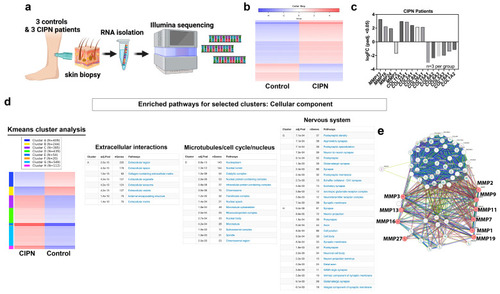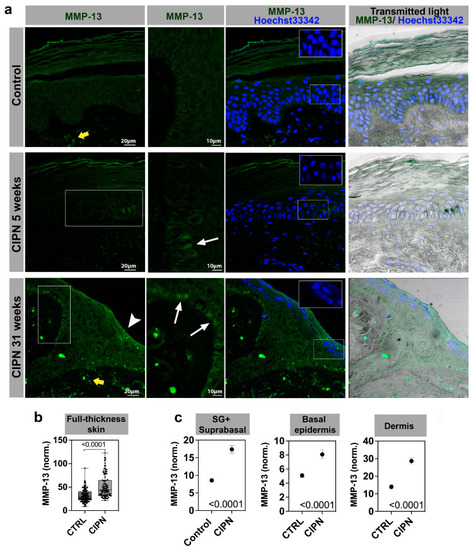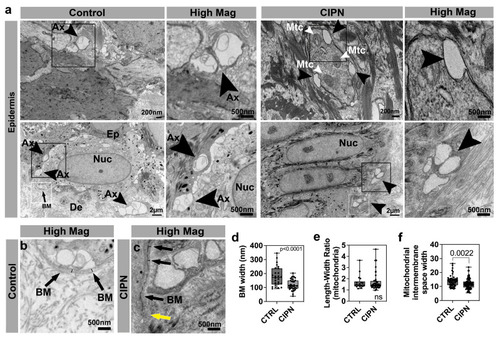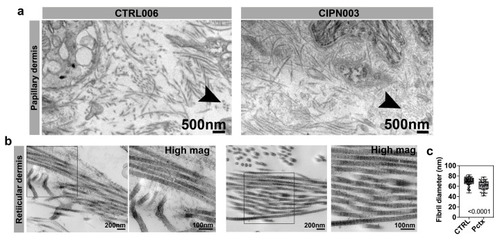- Title
-
Skin Extracellular Matrix Breakdown Following Paclitaxel Therapy in Patients with Chemotherapy-Induced Peripheral Neuropathy
- Authors
- Staff, N.P., Hrstka, S.C., Dasari, S., Capobianco, E., Rieger, S.
- Source
- Full text @ Cancers
|
RNA sequencing reveals extracellular matrix breakdown. ( |
|
MMP-13 immunofluorescence staining in different skin compartments. Stratum spinosum and granulosum, SS + SG; stratum basale, SB; and dermis. ( |
|
Epidermal changes in CIPN patients. ( |
|
Dermal collagen abnormalities in CIPN patients. ( |




